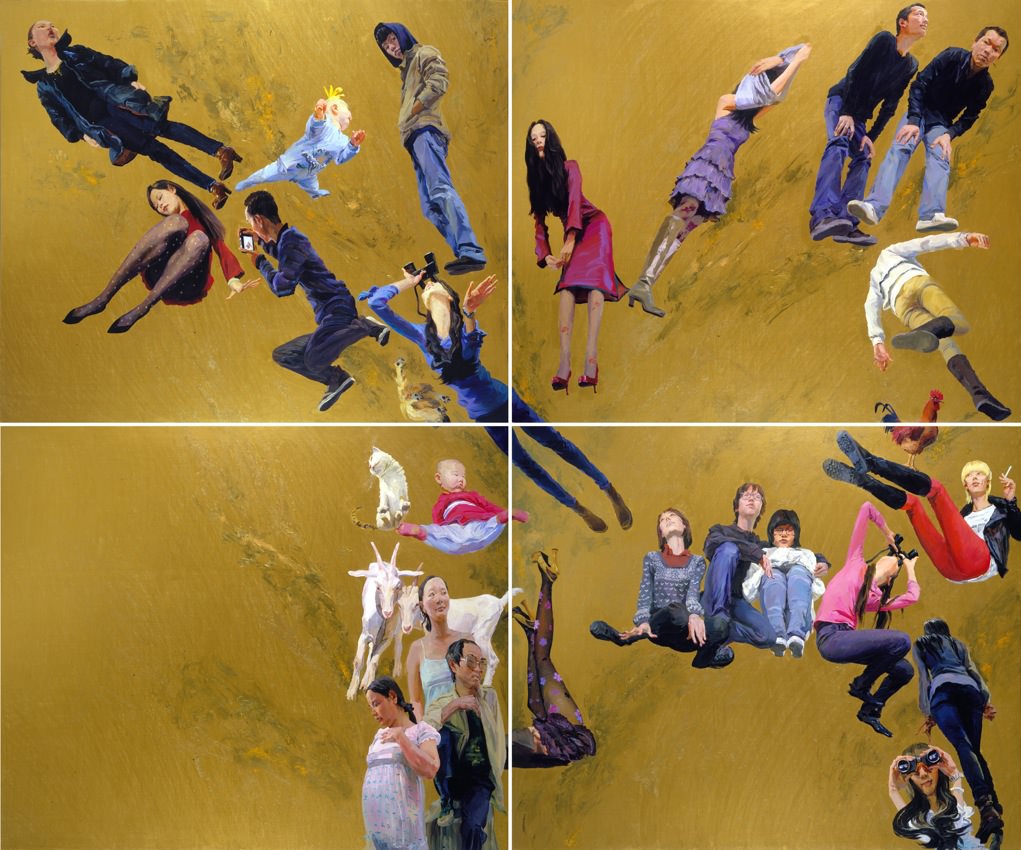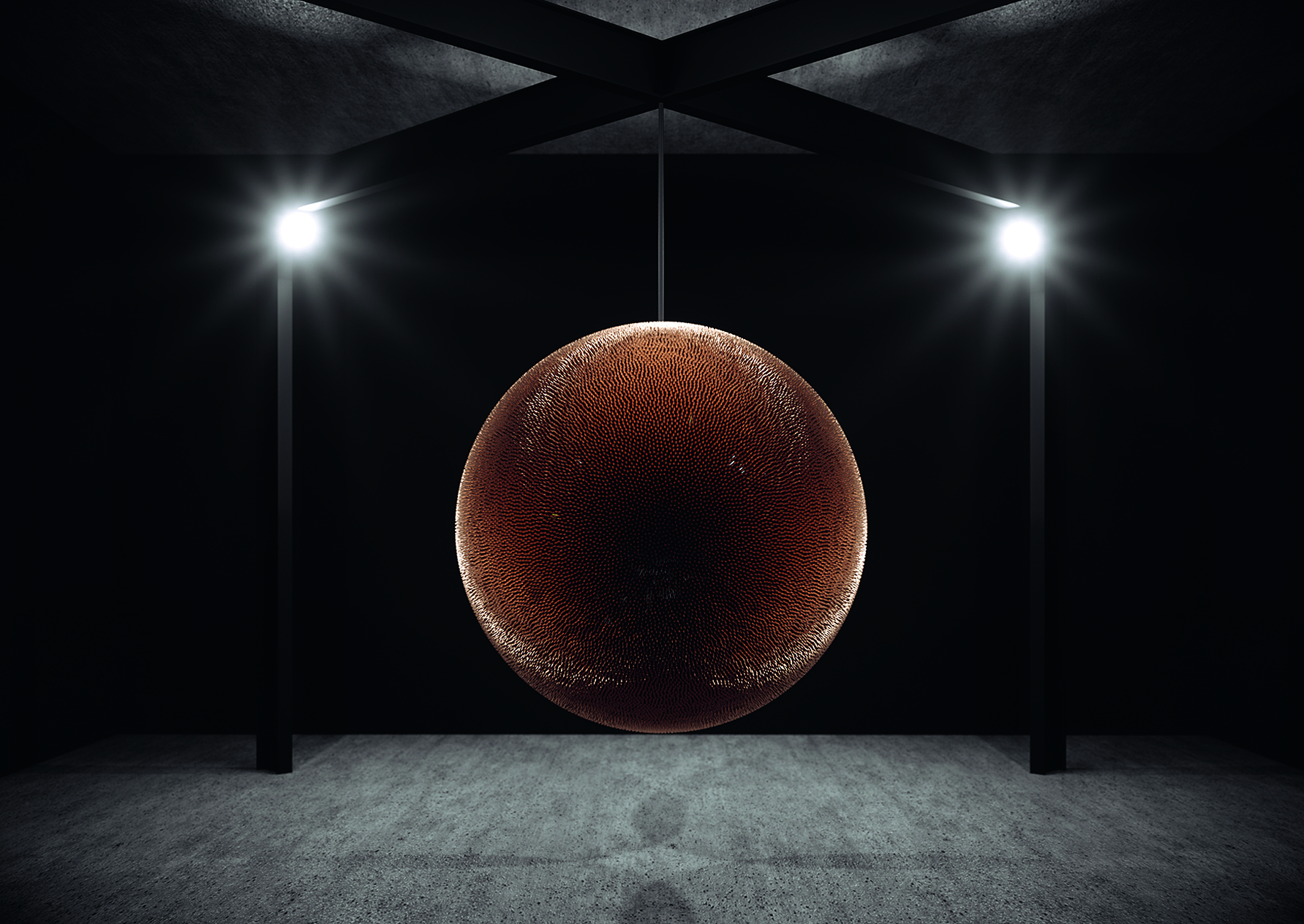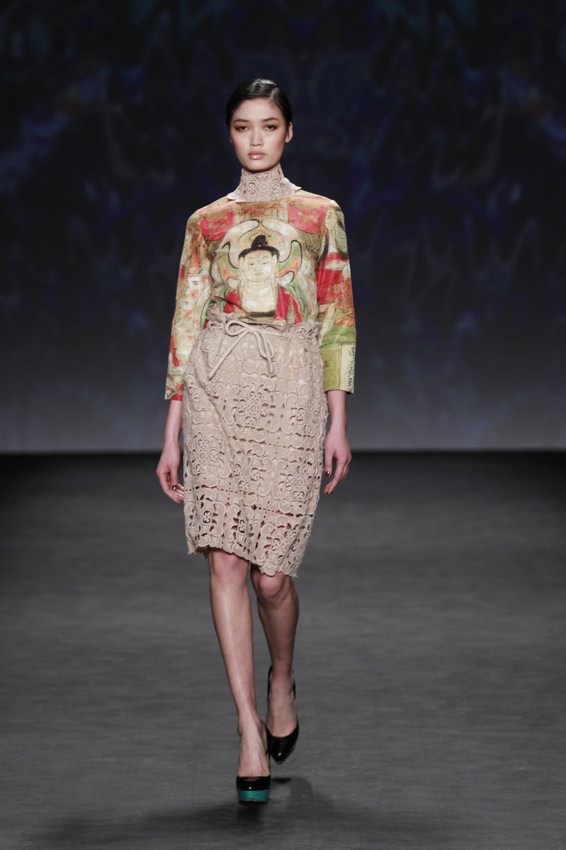The magnificent, fourth-century Buddhist cave shrines of Dunhuang were an inspiring place eons before they became a UNESCO World Heritage Site in 1987.
Opening last Friday, a tiny, lovely exhibit at the China Institute Gallery on the Upper East Side of Manhattan showcases how this ancient cultural landscape, and the thousand-year time capsule of Chinese painting enshrined there, has inspired 20th- and 21st-century Chinese artists as well.

Ink and color on paper
Scroll: 84 1/4 x 29 3/4 inches
Presented here is a very carefully edited collection, mostly paintings along with some sculpture and one video piece, by 15 artists.
“The powerful impact of visiting Dunhuang provokes a vast array of responses,” said Willow Weilan Hai, who curated the show as director of the gallery, in a statement. She said she “was amazed that every contemporary artist whose work is represented” approached the ancient site and its art with “a completely different point of view.”
Of the artists who are alive and working today, the most prominent of those on view are Yu Hong, Zhang Hongtu, Liu Jude, and Liu Dan. Most of the work is on view in the U.S. for the first time.
The centerpiece and highlight of the show is unquestionably Questions for Heaven (2010) a four-paneled scene mounted on the ceiling of one of the two small rooms that comprise the exhibit. The nearly 900lb work is on loan from a private collection in Beijing. The artist is Yu Hong, whom Hai described as one of the most celebrated female artists working in China today.
According to the gallery notes, Yu was struck by how “looking up is a forgotten way of viewing artwork,” most obviously so in contemporary painting. “I was inspired by this complex and dynamic composition to create a painting with a perspective where the audience looks upwards, as if peering through an invisible glass ceiling.” The perspective is refreshingly skewered and unique – even for Western viewers accustomed to ceiling paintings like those of Sistine Chapel.
What’s fun and wonderful about Yu’s work is that her heaven is populated not with deities but rather with a smattering of floating figures (hoodie-wearing hipsters posing, modern families waiting, a chic girl stretching, a couple of fat babies lolling about, a punkish woman smoking, a pregnant woman caressing her belly….even goats, a rooster, a dog, a cat). The inhabitants of this heaven are all “walking, seeking, waiting, and watching,” as Yu put it, often with binoculars or a cell phone camera in hand, peering at each other or down towards the viewer. It’s beautiful and, in its modern way, spiritual.
Yu’s composition comes from a ceiling mural of buddhas and bodhisattvas in Dunhuang’s Mogao Grottoes (#321 to be exact). The work is titled after a poem by the well-known Chinese poet Qu Yuan (340 BCE – 278 BCE) that raises more than 170 questions about the universe, including, said Yu, “matters concerning logic, species, spirits, society and history.” She “used this as a conceptual devise to express how people in a rapidly developing Chinese society think and question the variables relating the world, life, morals and ethics.”
According to Hai, who gave us a quick tour of the show, Dunhuang inspired generations of artists in modern times beginning with one of China’s most famous and prodigious Chinese artists of the 20th-century, painter Zhang Daqian whose work is also featured here. Hai said that the younger contemporary artists most likely first discovered Dunhuang through Zhang’s oeuvre.
The rich cultural history of Dunhuang is due in part to its location between Mongolia and Tibet on China’s fabled Silk Road. A crucial hub for East-West trade, it was where, as noted in the catalog accompanying the exhibition, “the traditions of China and Western countries met, collided, and merged.”
China Institute Gallery, established in 1966, was the first in the United States to exhibit Chinese art exclusively on a regular basis. The gallery is part of the visual arts program of The China Institute in America, founded by Chinese and American educators in 1926 to promote the appreciation of Chinese heritage and provide an historical context for understanding contemporary China.
“Inspired by Dunhuang: Re-creation in Contemporary Chinese Art” will be on view through June 8, 2014.








